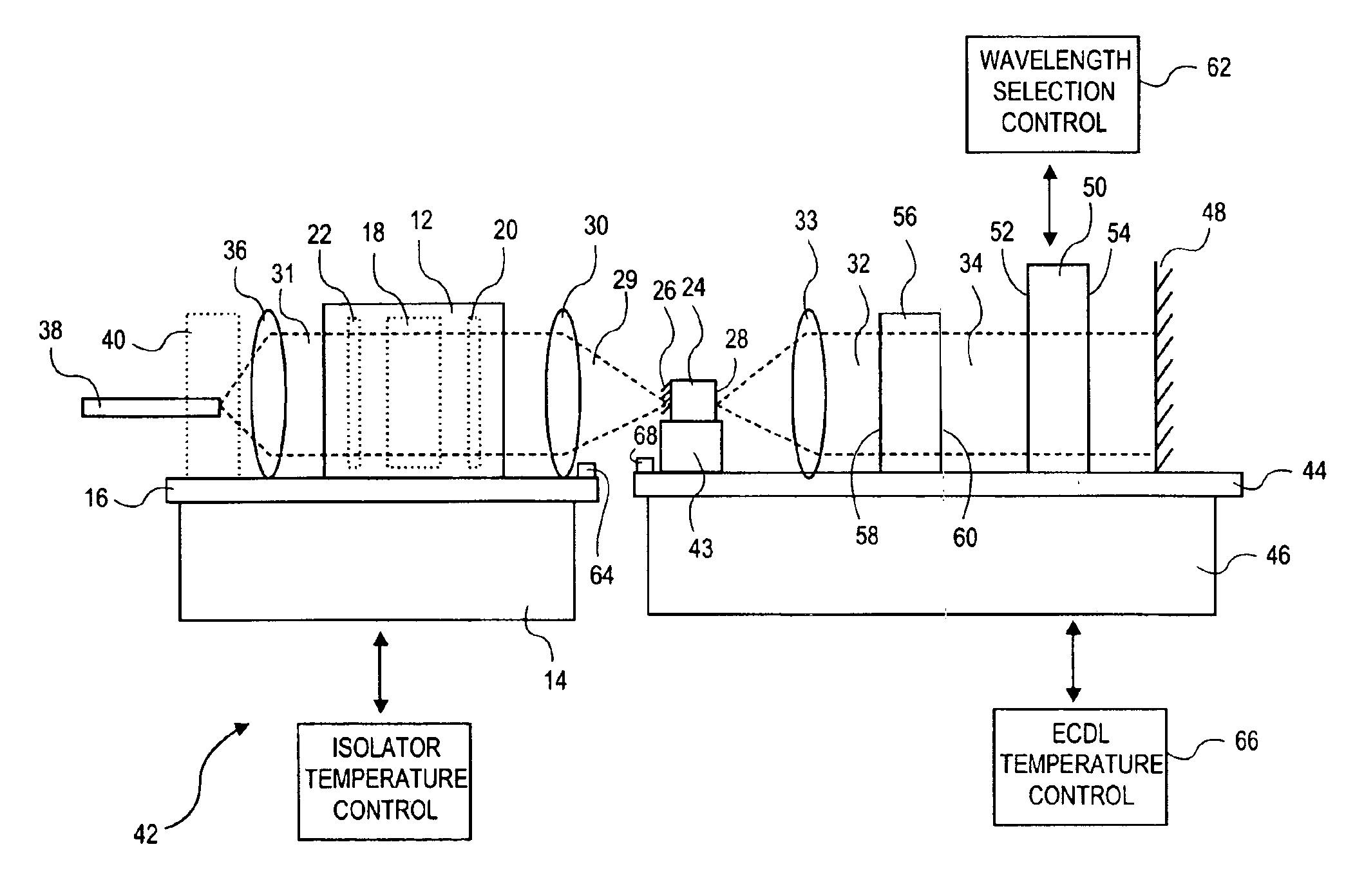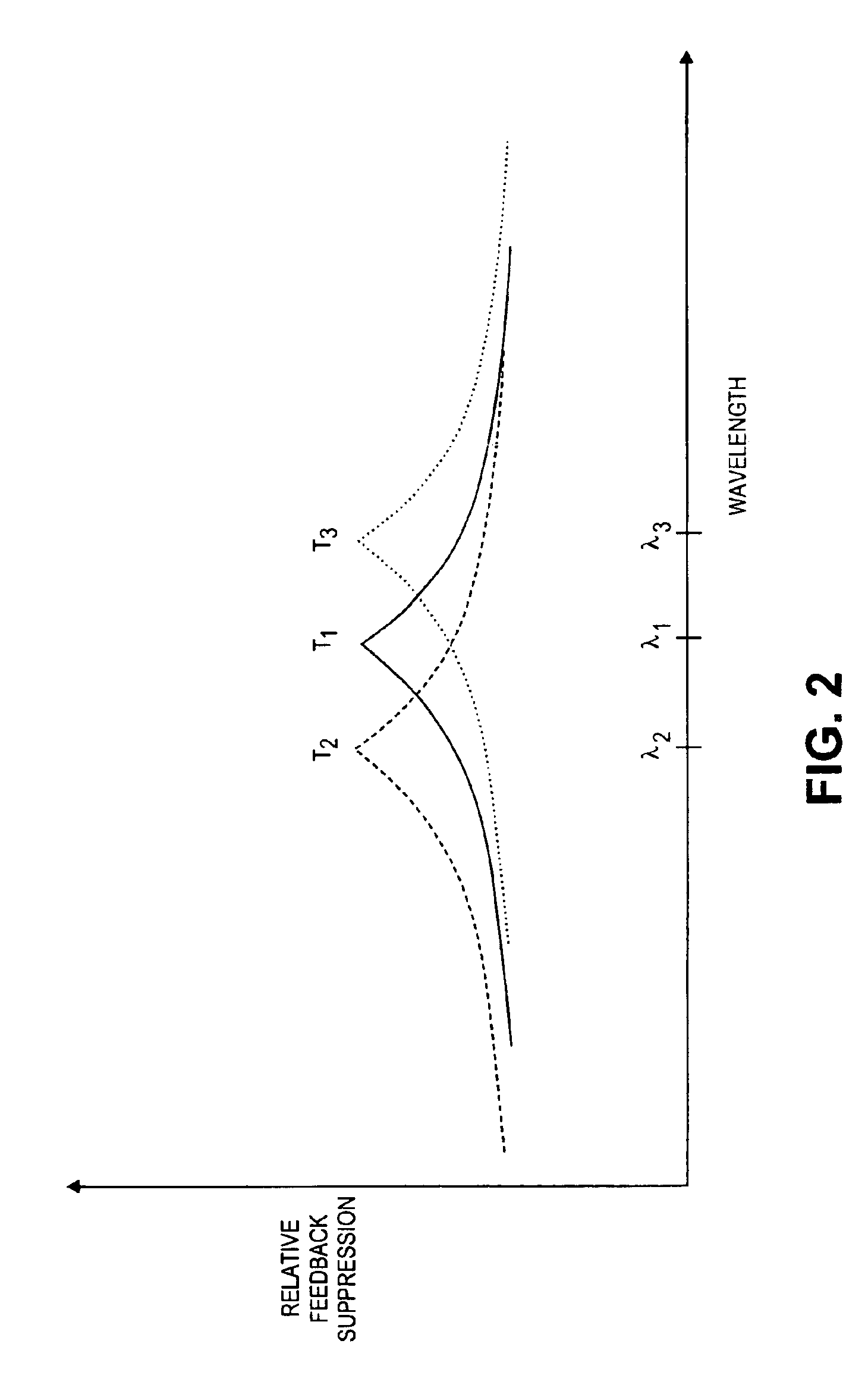Optical isolator apparatus and methods
a technology of optical isolators and isolators, which is applied in the direction of generators/motors, instruments, optical elements, etc., can solve the problems of small channel separation and difficult to achieve goals
- Summary
- Abstract
- Description
- Claims
- Application Information
AI Technical Summary
Problems solved by technology
Method used
Image
Examples
Embodiment Construction
The invention provides methods and apparatus for optimizing feedback suppression of optical isolators when used with variable wavelength light sources. The methods of the invention comprise, in general terms, positioning an optical isolator in a light beam, and adjusting feedback suppression by the optical isolator according to wavelength of the light beam. The methods may further comprise adjusting wavelength of the light beam, and emitting the light beam by a gain medium.
In certain embodiments, the adjusting the feedback suppression comprises adjusting temperature of the optical isolator. The adjusting temperature of the optical isolator may comprise adjusting temperature of a non-reciprocal rotator associated with the optical isolator. Adjusting temperature of the optical isolator may comprise coupling the optical isolator to a thermal control element, thermally controlling the optical isolator with the thermal control element.
The invention also provides methods of laser operatio...
PUM
 Login to View More
Login to View More Abstract
Description
Claims
Application Information
 Login to View More
Login to View More - R&D
- Intellectual Property
- Life Sciences
- Materials
- Tech Scout
- Unparalleled Data Quality
- Higher Quality Content
- 60% Fewer Hallucinations
Browse by: Latest US Patents, China's latest patents, Technical Efficacy Thesaurus, Application Domain, Technology Topic, Popular Technical Reports.
© 2025 PatSnap. All rights reserved.Legal|Privacy policy|Modern Slavery Act Transparency Statement|Sitemap|About US| Contact US: help@patsnap.com



